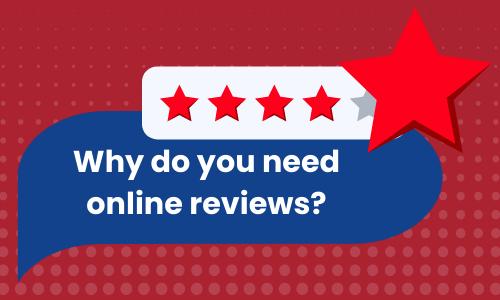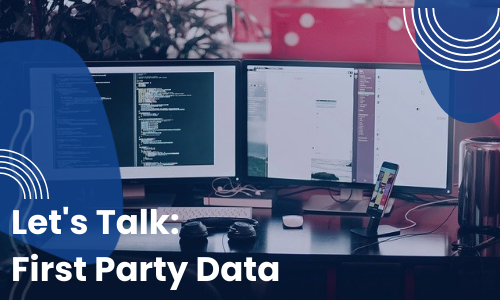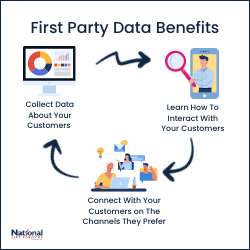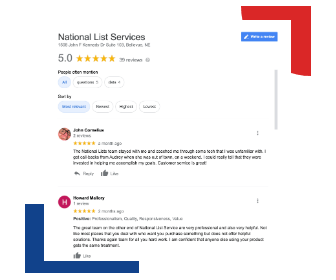Why do you need online reviews?

Online reviews are a staple of our lives now. Why should you care about the reviews that your company or products are getting online? Here’s what we have found!
The Social Proof Phenomenon
What do online reviews have to do with “social proof?” “Social Proof” is the phenomenon based on the fact that it’s easier to buy things or trust companies if we know that other people already have. Our peers provide the proof of somethings value.
“Social proof” is part of the transparency that builds brand trust. Most consumers (almost 88%) research a business before buying from them. A lot of that research comes from reviews and reading what other people have said about their experiences.
What else can Reviews Do for you?
Reviews can help educate consumers on your products and services. Reviewers usually talk about their specific experiences in their reviews. It can be an easier way for potential customers to learn more about what you offer.
Reviews Boost SEO. Specifically, Google Reviews. Google indexes reviews connected to your listing to help filter results. Especially for local traffic. “Best __ Near Me” is decided by reviews and stars. Customers will often use your keywords in reviews without even realizing it. This helps Google learn about you.
What can you do to collect reviews?
People are inclined to leave reviews if they a specifically positive or negative experience. Therefore, work hard to provide an overwhelmingly positive expertise for your customers! (You should be doing this anyway; the review is just a byproduct. 😉 )
People like to do things for other people so a great way to collect reviews is to just ask for them! A follow up survey email after they buy from you is an easy way to this. Ask them specific, easy to answer questions about things such as: service response times, shipping times, product or service quality etc.
Make it easy to review you. No one has time to take 10 minuets following a complicated review survey with long required written answers. People are doing you a favor by reviewing you, show that you apricate it by being respectful of their time and effort. Take out pain points of the review process: go through and make sure there aren’t any unnecessary steps or questions. Double check the user interface, id it easy to figure out?
Incentivizing your reviews (specifically ecommerce) is a big no-no! As temping as it is to show your appreciation for the review with a coupon or free shipping, or something: don’t. Both Google and Yelp have policies in place banning incentivized reviews. They will take the reviews down and give you a slap on the wrist.
What to do with reviews once you have them
You have the reviews – now what? Here’s 2 ways to leverage them!
- Show them off
Let your reviews sell your product for you. Happy previous customers can be a great way to convince your potentials to buy from you! Show off your reviews on your home page with Google review widget or prominently feature some reviews as part of the design. Don’t forget to ask for permission first if you are going to highlight a specific review, especially if you are going to use their picture. - Engage with reviewers
let them know you appreciate them! It doesn’t have to be a big deal, simply liking the review or just saying thanks goes a long way. That little bit of effort can turn a happy customer into a loyal one. And a lot of marketing automation software makes replying to reviews across multiple platforms easy.
Do you have a favorite customer review?
While we are on the subject… leave us a review! 😜
Let’s Talk First Party Data

We talk about First Party Data a lot. What it is?
First party data is data that your company has collected directly from your audience which is made up of customers, site visitors, and social media followers. “First party” refers to the party that collected the data firsthand.
First Party Data is collected from the people you have the most to learn from: your current customers! That makes the data as reliable as possible.
How can you collect first party data?
You can attain first party data from your CRM, surveys and subscription-based emails or products. This is also where Google and Social Media Analytics are important.
Google Analytics has a massive list of capabilities and ways to track website data. Using tracking code, Analytics collects information about the way the website was used.
Such as:
- Time of visit
- Pages viewed
- The time spent on each page
- What browser and OS are being used
- Referring site details
- Network location and IP address.
This information can help you see where (and how) traffic is following to and through your website. Google Analytics also has a lot of other tools such as URL Builder that make it easier to track customer data.
Social media analytics are helpful for flushing out the demographics are your most engaged customers. What can you learn about customer from social media? Here’s are some things you can learn:
- What platforms your customers prefer to engage on
- What content do your customers enjoy most
- What type of campaign or advertising works for them?
- Do they have any other hobbies or interests?
- More specific customer demographics, such as age or gender
It’s also super important to connect as many touch points to your customers as possible. The more ways you have to interact with the customer the more likely they are to become a repeat loyal customer. Think about the companies you follow on social media. Have you bought from them? More than once? Are you loyal to them? Do you agree with their mission and goals? Following companies on social media feels like a personal one-on-one connection and generates loyalty.
Organization is Key
The next step of having/using first party data is organization. Having important information about your customers and leads doesn’t do much good if you can’t find it or if it’s connected properly. No matter what size your business is, having a CRM is key. The days of using a Rolodex are long gone. Now there a lot more channels of data to connect to a contact.
For example, in our CRM we keep track of more than just name, company, phone, and email. Our CRM keeps track of what social media we are connected on and any times the contact has engaged with us. We have it set up so that the CRM assigns a number value to actions a contact or lead can take, such as opening emails, clicking links, liking a post, and any orders.
How does all that information benefit us?

There are many ways! For one, we can use the information we have to target or retarget contacts, leads, and prospects. We can try different channels and types of touches until we find which one they respond best to. Having more than one channel connected to each contact makes multichannel campaigns possible.
The other advantage to First Party Data is that you can collect data and analytics about your customers from the channels you are using to constantly to learn more about your demographics and your customer’s buying habits. The more channels you use the easier it will be to learn about your customer. Then the more customers you have the more information you can learn about your potential target audience. You can use a Look-A-Like to build a list of potentials you can target based on information on your current customers.
What ways do use First Party Data?
Here’s how First Party Data might the key to the future cookie-less world.

